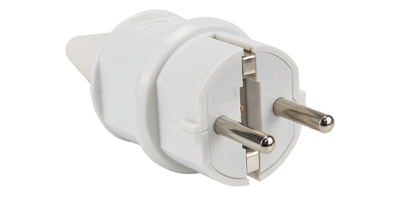In the field of electrical equipment, accurately assessing the durability of Plug & Power Cord Series is of profound significance for ensuring electrical safety and enhancing user experience. It requires comprehensive consideration from multiple dimensions.

I. Conductor Material: The Foundation of Durability
The Influence of Copper Purity: High-purity copper materials, such as oxygen-free copper, are indicative of high-quality conductors. The high purity reduces the interference of impurities, enhancing electron conduction efficiency and minimizing resistance heating. This enables the power cord to maintain low power loss and stable performance during long-term current transmission. Oxygen-free copper with a purity of over 99.9% can efficiently carry current, preventing overheating-induced insulation aging and core damage, which is a core element of durability. For instance, high-end computer power cords often utilize such copper materials to ensure long-term stable power supply.
The Role of Alloy Components: Certain special alloy components can enhance durability. Copper alloys, such as tin bronze, incorporate elements like tin into copper. This enhances tensile strength and wear resistance, safeguarding against mechanical stress and environmental corrosion. In power cords for industrial equipment, which often endure vibration, pulling, and chemical corrosion, tin bronze conductors can prevent breakage and corrosion, maintaining stable current transmission and prolonging service life. This ensures the continuous and reliable operation of the equipment.
II. Insulation Performance: The Enduring Protection
The Quality of Insulation Materials: High-quality insulation materials, such as cross-linked polyethylene and fluoroplastics, are guarantees of durability. Cross-linked polyethylene exhibits high electrical insulation strength, temperature resistance, and chemical stability, preventing leakage and short circuits. It remains reliably insulated in wet, oily, acidic, or alkaline environments. Fluoroplastics offer excellent high-temperature and corrosion resistance. In high-temperature electrical equipment or harsh industrial environments, they ensure the constant insulation performance of the power cord, preventing insulation layer aging and cracking that could lead to safety risks and ensuring long-term safe power supply.
The Design of Insulation Layer Thickness: The rational design of insulation layer thickness is crucial for balancing durability and safety. A thick insulation layer enhances voltage and wear resistance but affects flexibility and heat dissipation. A thin insulation layer, while more flexible and better for heat dissipation, has a lower safety factor. The thickness of the insulation layer must be precisely designed based on voltage levels, usage environments, and current loads. For example, high-voltage transmission lines have thick insulation layers to prevent breakdown, while indoor electrical appliance power cords have moderately thin insulation layers to balance safety and ease of use, ensuring durability in different scenarios.
III. Core Structure: The Stable Core
The Optimization of Core Strand Number: The design of multi-strand fine copper wire twisted cores offers significant advantages. Compared to single-strand thick copper wire, multi-strand cores have better flexibility and stronger resistance to bending fatigue. They are less likely to break under frequent movement and bending. For example, power cords for mobile devices feature multi-strand core designs. Even after countless bends, they maintain good electrical conductivity and stable power supply, reducing the occurrence of device power failure due to core damage and enhancing the overall durability and flexibility of the power cord.
The Design of Central Reinforcement: Some heavy-duty or special-purpose power cords incorporate a central reinforcement. Under large current or frequent mechanical stress conditions, such as in power cords for industrial cranes, the reinforcement enhances the core's resistance to tension and compression, preventing core loosening and deformation. This maintains the structural integrity and stability of the power cord, ensuring stable current transmission and reducing the probability of electrical failure due to core structure damage. It significantly prolongs service life and guarantees the continuous operation of the equipment.